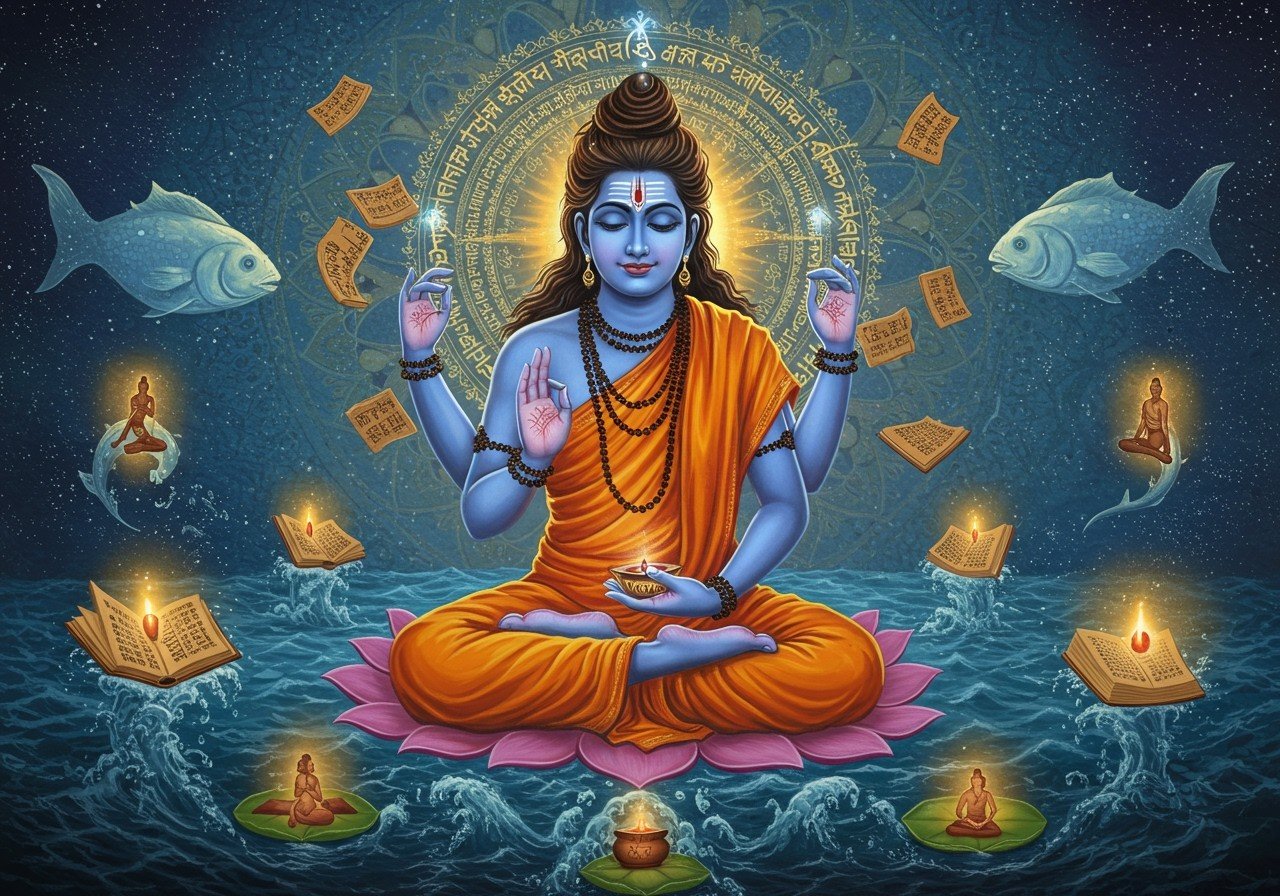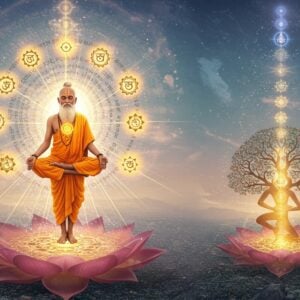
Matsyendranath, also known as Matsyendra, Macchindranāth, Mīnanātha, and Minapa, holds a revered position in both Buddhist and Hindu traditions. He is celebrated as the originator of Hatha Yoga and the Nath Sampradaya, a lineage rooted in esoteric yogic practices. Tradition holds that he received direct teachings from Shiva, adding to his mystique and spiritual authority. Explore his profound contributions and the enduring influence of his teachings within the spiritual and philosophical landscape of India and beyond.
Matsyendranath’s Historical and Cultural Significance
Matsyendranath is believed to have lived between the 9th and 10th centuries CE, a period of dynamic socio-political transformations in India. His teachings emerged amidst these changes, providing spiritual solace and guidance. These teachings blended elements of yoga and tantra, forming the core of the Nath tradition. This tradition facilitated the integration of diverse spiritual practices, fostering a more inclusive spiritual environment.
Matsyendranath’s influence extended across significant regions, notably the Himalayas and the Deccan Plateau. His presence shaped the spiritual landscape of these areas, leaving an enduring legacy on the practices and beliefs of the people. Understanding this historical and cultural context enriches our appreciation for the ongoing relevance of Matsyendranath’s teachings, which continue to resonate with spiritual seekers today. For those unfamiliar with these concepts, understanding terms like ‘Nath tradition’ and ‘tantra’ is crucial for a deeper appreciation of Matsyendranath’s contributions. More information on related spiritual traditions can be found at https://www.poojn.in/post/15588/mantra-chanting-sound-vibration-healing-power.
Key Highlights:
- 9th to 10th Century CE: Matsyendranath’s era of influence, marking a pivotal period in India’s spiritual history. This era saw the development and spread of key yogic and tantric concepts.
- Nath Tradition: A unique blend of yoga and tantra, addressing the spiritual needs of the time. This tradition continues to be a vital part of Indian spiritual practices.
- Cultural Influence: Matsyendranath’s teachings impacted regions like the Himalayas and Deccan Plateau, shaping their spiritual landscape and influencing local customs and beliefs.
Matsyendranath’s Literary Contributions
Matsyendranath’s written works are essential resources for those studying yoga and tantra. His books provide profound insights into these spiritual traditions. The Kaulajñānanirnāya, meaning “Discussion of the Knowledge Pertaining to the Kaula Tradition,” is a significant text that delves into tantric philosophy and practices. The Kaula tradition is a specific branch of tantra, and this book is considered a key guide for those seeking to understand its principles.
The Matsyendrasamhita is another important work, containing mantras, hymns, and valuable information about the history of yoga, particularly its connections with Śaiva religions. English translations of portions of this text are available, enhancing its accessibility for a broader audience. The insights into early haṭhayoga are invaluable for scholars and practitioners alike, and understanding Śaiva traditions is key to grasping the full context of the teachings. This text serves as a crucial link between ancient wisdom and modern understanding.
The Akula-Viratantra further expands Matsyendranath’s literary contributions. This tantric text offers additional teachings and insights, enriching our understanding of his spiritual depth. Together, these books showcase Matsyendranath’s significant role in shaping the Nath tradition and its associated practices.
If you are interested in learning more about sacred texts and their significance in Hinduism and related traditions, Poojn.in offers a curated collection of holy books for your spiritual journey.
Key Highlights:
- Kaulajñānanirnāya: A comprehensive discussion of tantric philosophy and practices within the Kaula tradition. It provides a deep dive into the esoteric aspects of this tradition.
- Matsyendrasamhita: A valuable resource on yoga’s history, Śaiva traditions, and early haṭhayoga practices. It contains mantras, hymns, and crucial historical information.
- Akula-Viratantra: A tantric text that provides further insights into Matsyendranath’s teachings and complements his other works. It offers deeper explorations of esoteric concepts and practices.
Matsyendranath’s Mantras and Their Significance
Mantras play a central role in Matsyendranath’s teachings, acting as sacred sounds that guide meditation and spiritual development. The Guru Mantra is of paramount importance for disciples, especially ascetics. Received during initiation into the Siddha tradition, it serves as a tool to quiet the mind and awaken Kundalini Shakti, the dormant spiritual energy. It facilitates a deeper connection with the guru’s lineage and teachings.
Bija Mantras, or seed syllables, also hold great significance. These powerful sounds are believed to resonate with specific energy centers within the body, corresponding to the chakra system. Practitioners utilize bija mantras to channel energy and enhance spiritual awareness. These mantras have profound effects on the subtle body and are crucial for advanced yogic and tantric practices.
The Natha-mantra of Yoga Maya Bālā and the Śrīvidyā mantra of Bālā are further examples of important mantras associated with Matsyendranath. Each mantra carries unique vibrations and meanings, assisting practitioners on their spiritual path. These mantras are used in specific sadhanas or practices, and understanding their purpose is essential for effective application.
Explore our collection of clay items and other ritual objects that can enhance your mantra practice.
Key Highlights:
- Guru Mantra: Essential for disciples, particularly ascetics, given during initiation into the Siddha tradition. This mantra is a cornerstone of the guru-disciple relationship and is considered highly sacred.
- Bija Mantras: Seed syllables that align with the body’s energy centers (chakras). Each bija mantra corresponds to a specific chakra and is used to balance and activate these energy centers.
- Natha-mantra of Yoga Maya Bālā & Śrīvidyā mantra of Bālā: Powerful mantras associated with specific deities and practices. These mantras are used for specific spiritual purposes and are integral to certain tantric traditions.
Matsyendranath’s Influence on Modern Yoga and Tantra
Matsyendranath’s teachings have had a profound and lasting impact on modern yoga. He is widely recognized as the founder of Hatha Yoga, which emphasizes physical postures (asanas) and breath control (pranayama) as a path to spiritual liberation. His work laid the foundation for many contemporary yoga styles practiced worldwide today. His teachings continue to inspire and inform the evolution of modern yoga.


